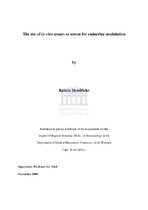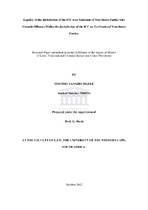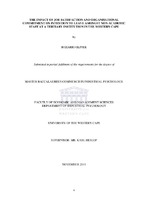| dc.description.abstract | Organisations are by nature, dynamic entities that continuously undergo transformation in response to both internal and external pressures, which are imposed on them (Robbins, Odendaal & Roodt, 2003). Government departments are by no means immune to these changes, which pose challenges that affect their service delivery. During periods of fundamental transformation, individuals typically experience changes in their levels of organisational commitment, which impacts on effective and efficient service delivery. Organisational commitment as an area of research is one of the factors that could lead to greater morale, strong organisational climate, motivation and productivity in many organisations facing transformation (Salami, 2008). The aim of this study was to investigate the level of organisational commitment after a transformation process at a Provincial Government Department. Recent organisational transformations (both in the private and public sector) have included the redrawing of divisional boundaries, flattening of hierarchic levels, spreading of spans of control, revising compensation, streamlining processes and reforming governance (Ndlovu & Brijball Parusumar, 2005). The results of the research indicate that employees are moderately committed to the organisation. Statistically significant relationships were found between the dimensions of organisational commitment, except for affective commitment and total commitment which were not significant. Furthermore, results indicate that statistically significant differences exist based on the biographical characteristics (namely, gender, race, tenure, marital status, age and job level) but these characteristics do not significantly explain the variance in organisational commitment for this organisation. A limitation of the research is that the sampling composition and research design preclude the results of this study being generalised to other organisations and it is recommended that a stratified random sampling design be utilised for future research. | en_US |




